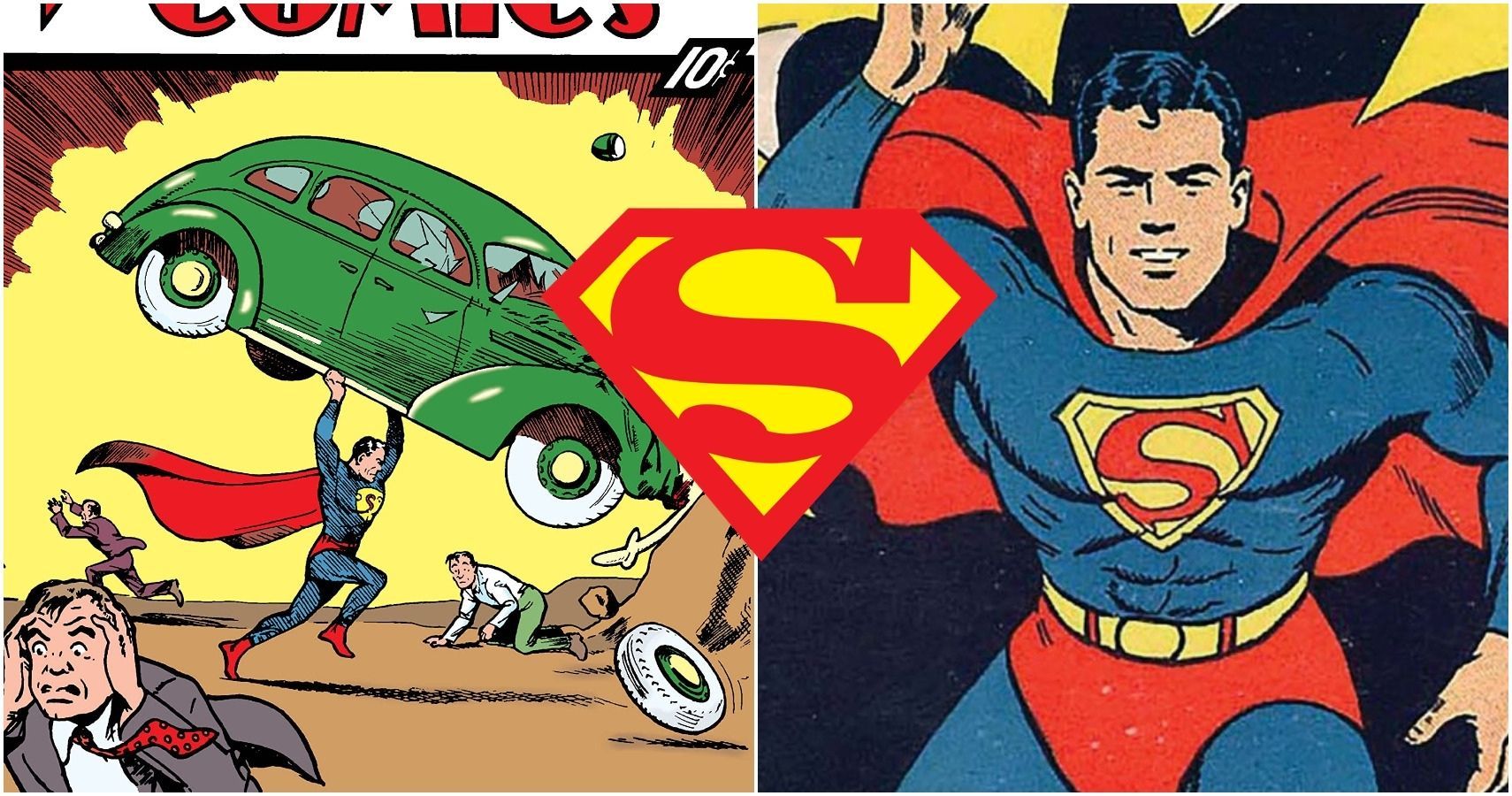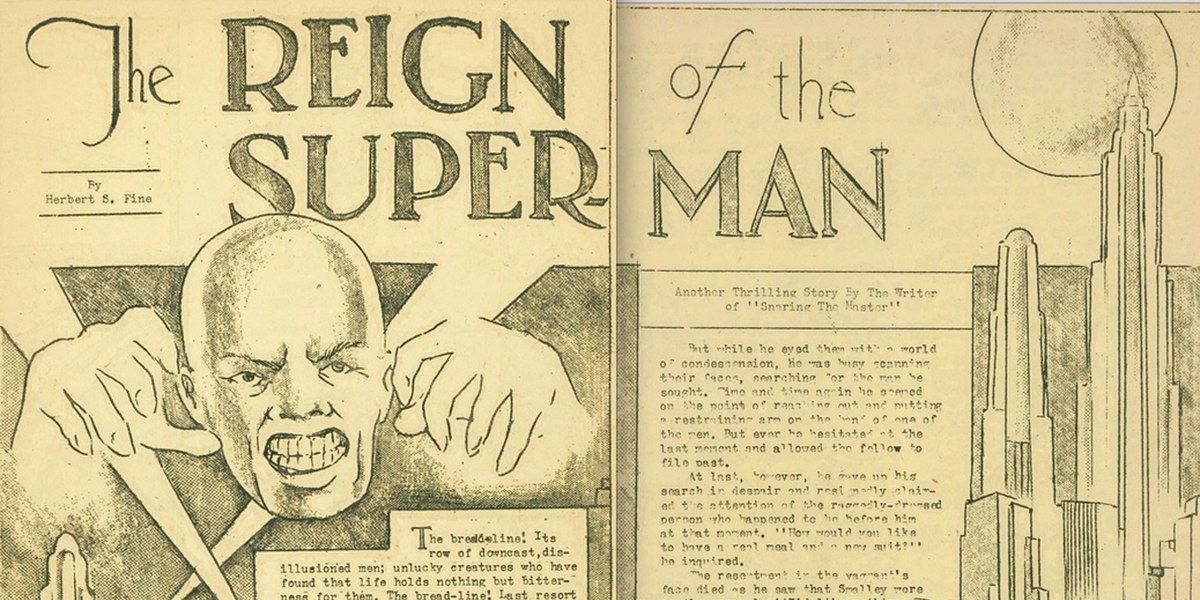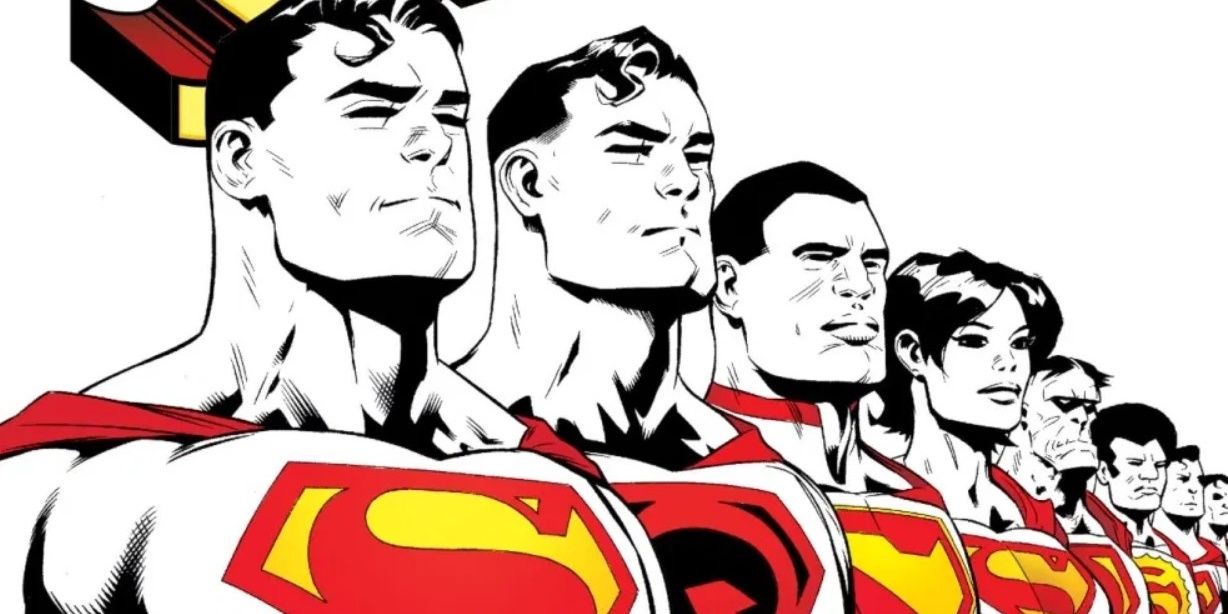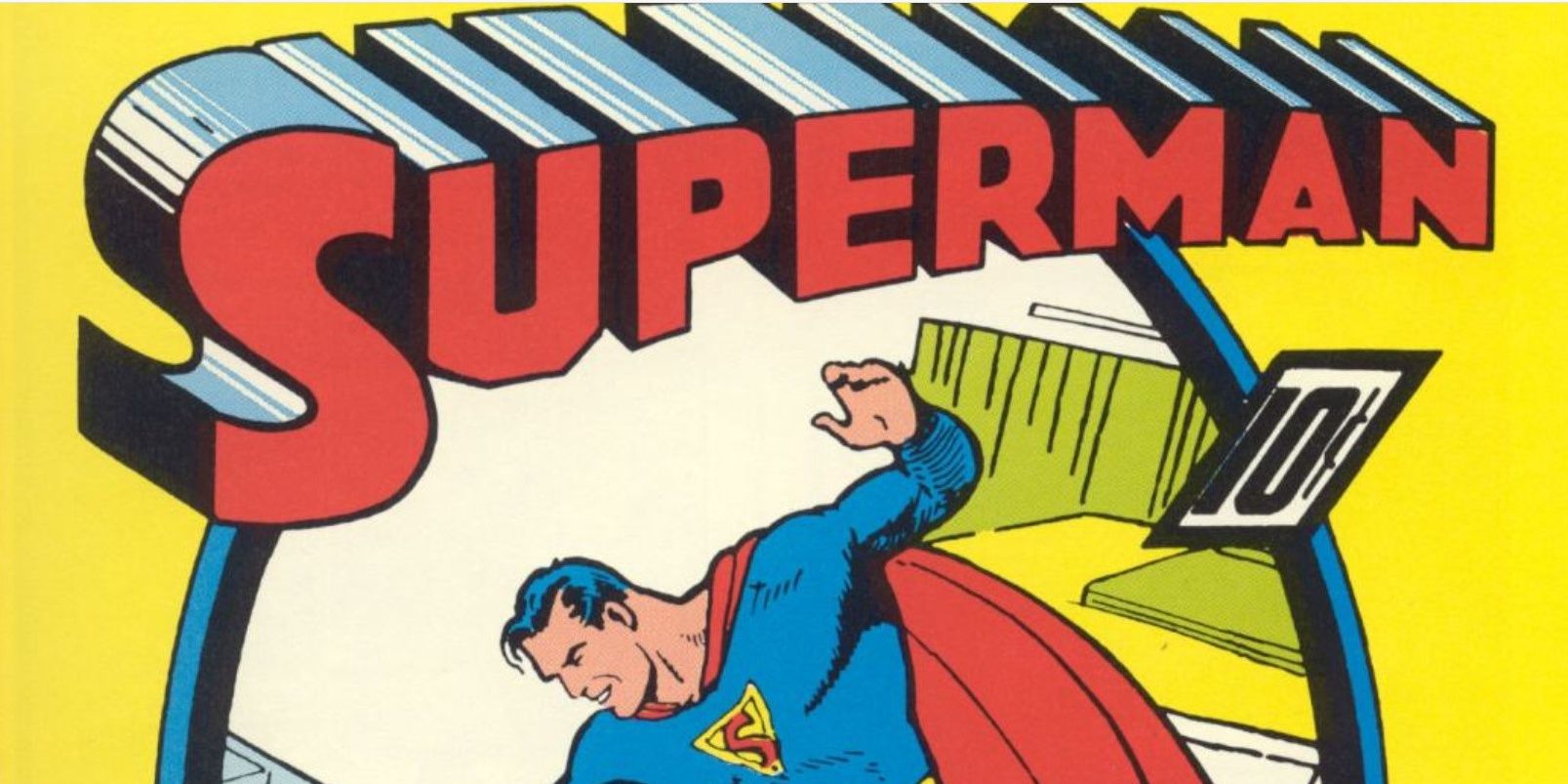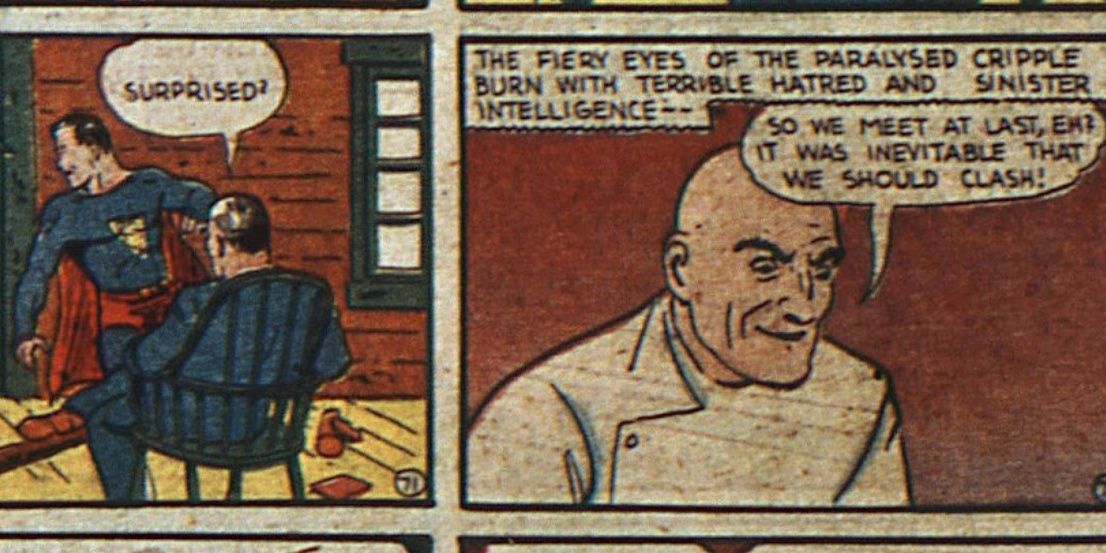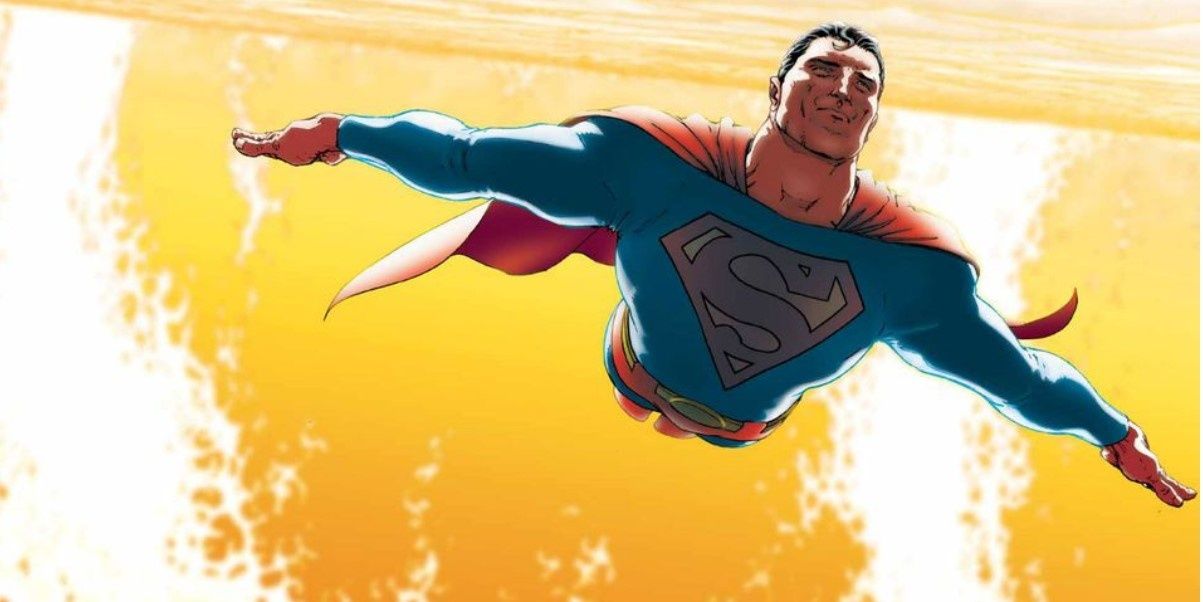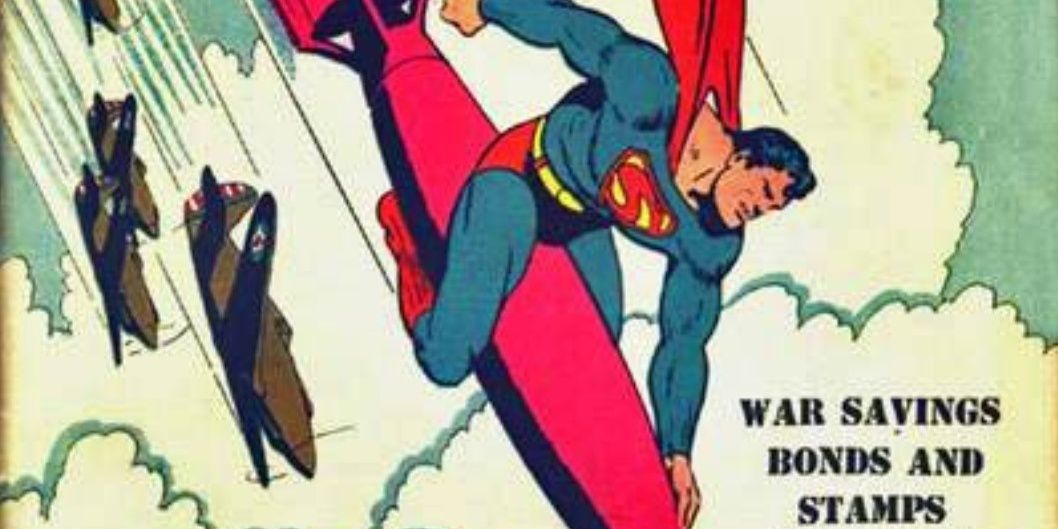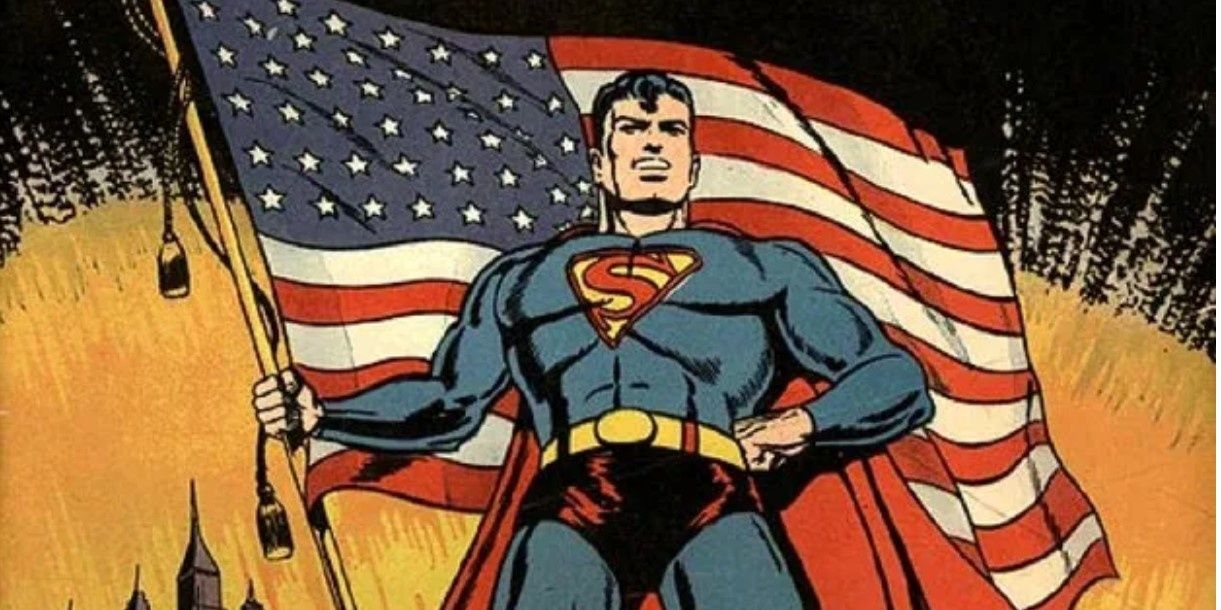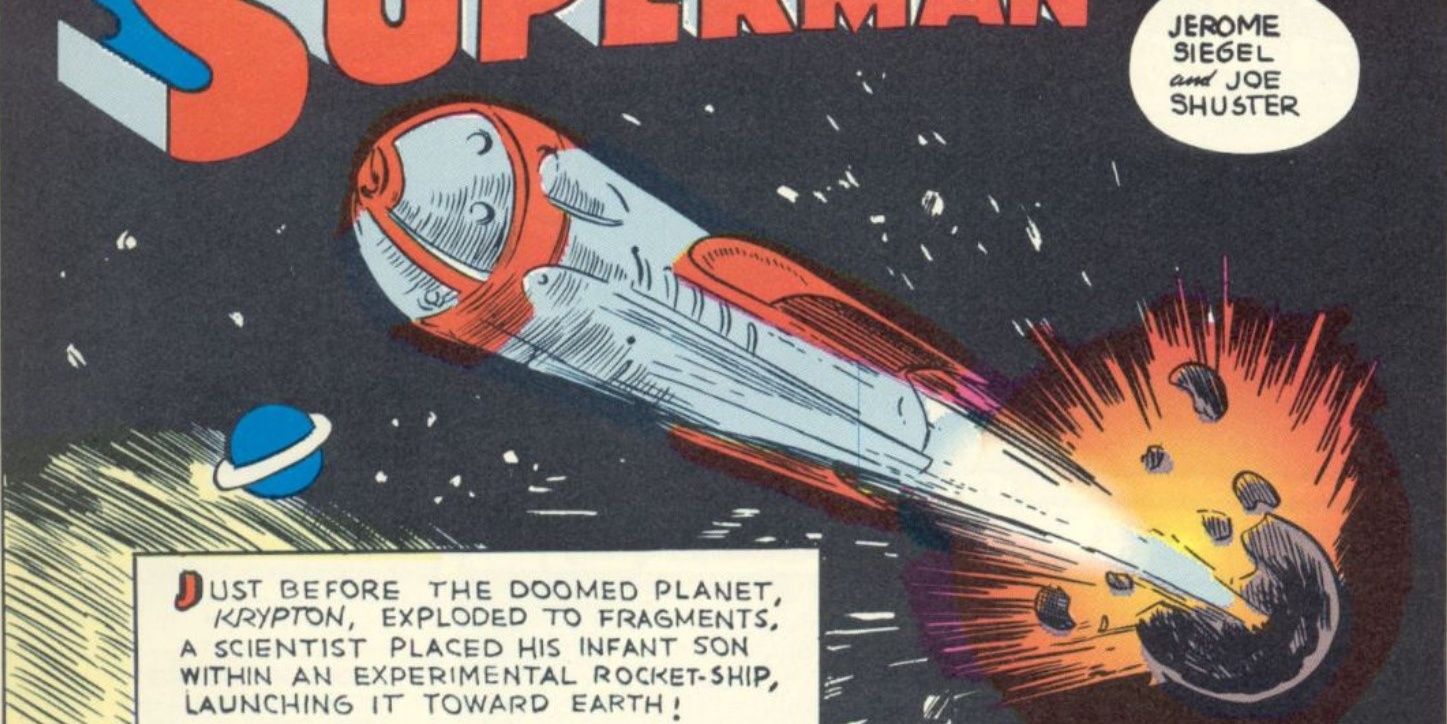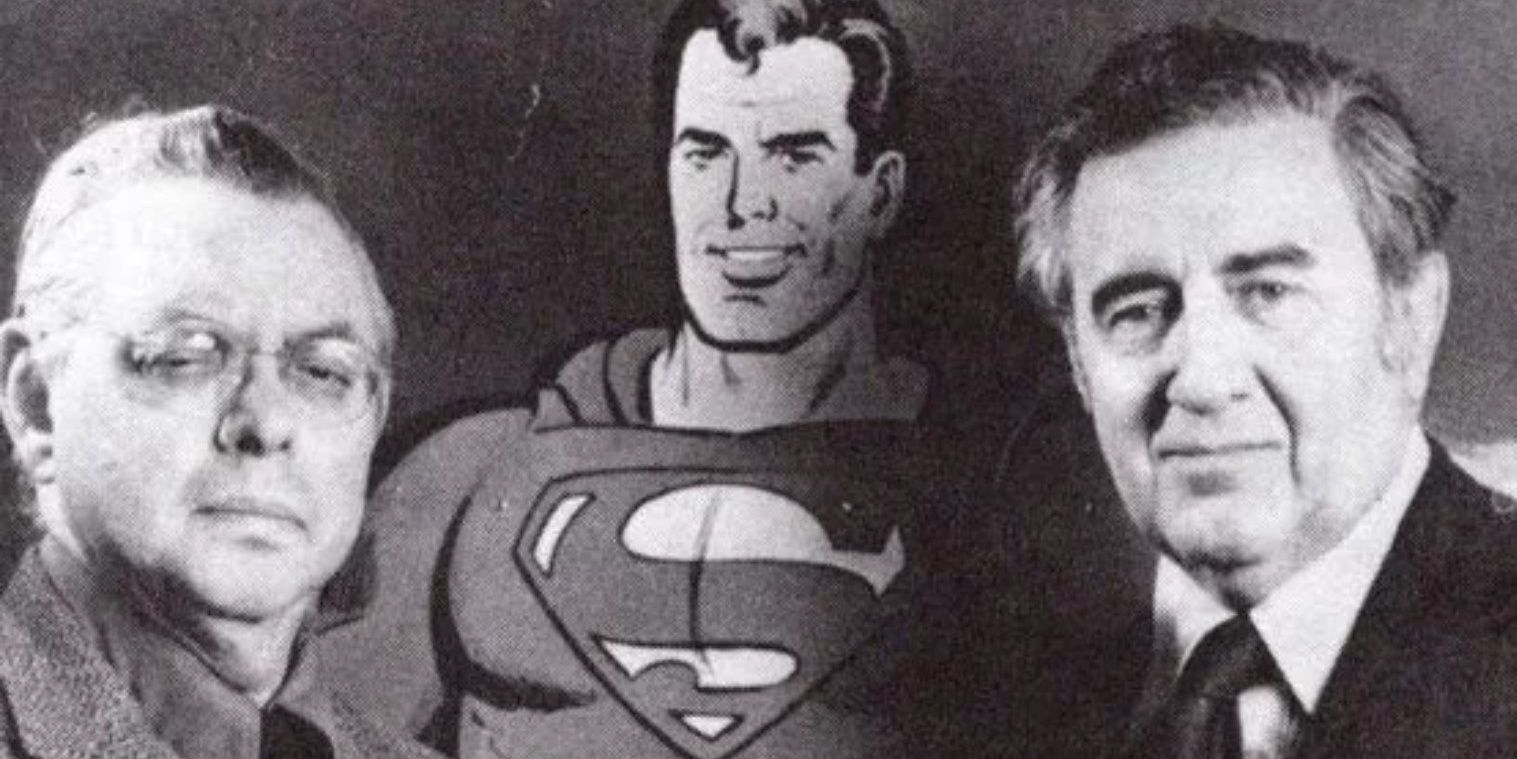Superman may be impervious to bullets, lasers, and even nuclear blasts, but even the Man of Steel is powerless against the forces of editors to alter his nature. Over his career, the hero went from being a cape-clad strongman who could jump leap buildings in a single bound to the strongest man in the world with powers that enabled him to defeat literal gods.
Changes to the status quo are commonplace in comics these days, but Superman was subjected to them even during his early years. In fact, the Man of Steel's creators, Joe Shuster and Jerry Siegel, were directly responsible for many of the hero's biggest changes during the Golden Age, some of which were downright shocking.
10 He Began As A Villain
It is a commonly known fact among many comics fans that Superman made his debut on the cover of Action Comics #1, beginning the entire superhero tradition in comics. But that is only half of the truth.
Before Superman ever appeared as the musclebound hero lifting a car, he was actually designed to be a villain, given powers by a mad scientist in the 1933 story "The Reign of the Superman." Creators Jerry Siegel and Joe Shuster redesigned the character after this initial story, but they would eventually use this template of the of the mad scientist as the model for Superman's greatest villain, Lex Luthor.
9 Change In Attitudes
Before he stood for the nebulous concepts of "truth" or "justice," Superman specifically stood for the social justice of the New Deal, championing the plight of the common folk against corrupt politicians and bureaucrats. He fought for real issues against the real evils of the modern world, caring less about the law than about helping the disenfranchised.
However, his creators began to change their political philosophies as they got rich and stopped identifying with the downtrodden quite so much. This led to Superman adapting a tough-on-crime attitude, one which would inspire many other superheroes in the years to come.
8 Learning To Fly
Ask a person who knows almost nothing about Superman to describe what they know about him, and almost all of them will tell you that he can fly. In fact, when his live action movie came out in 1978, the tagline read "You'll Believe A Man Can Fly."
But originally, he could not fly at all. He could merely "leap tall buildings in a single bound." This would just be one of the many new powers he gained in the years since his debut.
7 Superman Serials
Looking back, the rise of Superman seems miraculous. Much of the character's success is owed to Harry Donenfeld, a man who specialized in shady finances and publishing pornographic magazines of all things. Wanting to expand his magazine business, Donenfeld bought the company National Allied Publications. But he needed a new character for the cover of the company's upcoming magazine, Action Comics, someone more interesting than the cowboys, detectives, and boxers whose stories the magazine contained. Eventually, Superman was chosen from a pile of unsolicited submissions the publisher had received.
Despite the mishmash of characters in Action Comics, Superman proved an immediate hit. Soon, he transcended the pages of Action, being given a comic named after him that would be all about his adventures– something practically unheard of at the time. Not long after, he made the jump to radio, cartoons, and a serialized film series.
6 Super Villains
As Superman was the first superhero, there were not yet any super villains he could fight. He dealt mostly with real-world issues, stopping corrupt politicians, exposing war profiteers, and saving innocents from death row.
The first supervillain that he fought was the Ultra-Humanite, a paralyzed old man whose incredible superhuman intellect made him the opposite of the handsomely muscled Man of Steel. Ultra-Humanite first appeared in Action Comics #13 in June of 1939. For context, Batman first appeared in March of that same year.
5 The Yellow Sun
Superman's strength comes from Earth's yellow sun, converting the sunlight into strength. Krypton had a red sun, and on his homeworld, the Kryptonian hero would not have had such powers. At least, that is the modern story.
Originally, there was no mention of a yellow sun. The comics just said that Superman came from a planet "whose inhabitants' physical structure was millions of years advanced of our own." Also, his strength was compared to the anatomy of ants and grasshoppers. That was it. The yellow sun, it turned out, would come a few years later.
4 Stance On WWII
Like Captain America and a number of other comic book heroes of the 30s and 40s, Superman supported American involvement against the Nazis in Europe. However, when the US finally did enter the war, Superman couldn't join. The reason given in the comics was that Clark Kent got a 4F on his draft form. In real-life, the creators knew that Superman was too strong and if he just killed Hitler with one punch, it would be the end of the comic.
By keeping the Kryptonian from joining the war, the publishers took a risk. But Superman comics were incredibly popular with the troops, who enjoyed the escapism these books offered. After the war ended, Superman remained relevant when other heroes fell out of favor.
3 "Truth, Justice, & the American Way"
The saying "Truth, Justice, and the American Way" is often directly associated with Superman. This actually was not from the comics at all, but was introduced in the 1940s radio show.
In fact, the bit about "the American Way" was cut in 1944 when the Axis Powers began losing in WWII. Of course, the phrase found its way into the comics, and in the years to come, it would appear in plenty of other media too.
2 Krypton & Kryptonite
Superman's origin as a refugee who escaped a dying world was on the first page of his story in Action Comics #1. The greater story of Krypton's destruction– and its name– were added a year later in the new comic titled Superman #1.
Like many aspects of Superman's lore, Kryptonite was not originally part of the comics, but was introduced in the radio drama in 1943. It would be another six years before its first comics appearance in Superman #61.
1 New Creative Teams
Jerry Siegel and Joe Shuster created Superman. It only made sense that they would write and draw everything. However, they also sold the rights to the character, and so while they were richly paid for every issue they produced, their publisher had the right to hire new talent at any time.
When Shuster began struggling with deadlines, he hired assistants to help him. One of these, Wayne Boring, eventually replaced Shuster as one of main artists to draw the character. Siegel's army conscription forced him to pass his responsibilities onto others, many of whom infused the comic with their own beliefs. This was one of the first times that a comic company would strip away a creator's freedom. Of course, it would not be the last.

